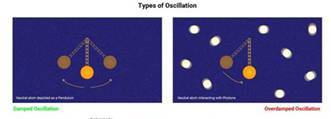Researchers have observed the distinct transport properties of ultra-cold atoms in a quantum system and studied their behaviour upon sudden exposure to light pulse. This understanding holds potential towards the design and development of smart & high conducting materials, including components for the next-generation batteries.
Cold atoms, or atoms that have been cooled to extremely low temperatures near to absolute zero, are excellent candidates for performing precision measurements. Quantum transport includes the study of the charge and energy flow within systems where quantum effects dominate. Relevant phenomena include quantum tunneling that is vital in flash memory devices; quantized conductance which is critical for designing nanoscale electronic devices and quantum point contacts.
In a classical charge transport, as in case of present-day batteries, it is a straightforward flow of electrons. What distinguishes quantum charge transport from classical charge transport is that the former directly incorporates quantum statistical principles. That is why, the understanding of the transport and diffusion properties of these trapped ultra-cold atoms, when they are subjected to externally-controlled laser tuning, is vital. In order to conduct the experiment, the atoms have to be trapped, else they will wander off according to their kinetic energy. Furthermore, it could potentially help in designing smart materials that are efficient, customisable and ones that offer high conductivity.
A team from the Raman Research Institute, an autonomous institute funded by the Department of Science and Technology (DST), Government of India, attempted to decode the quantum transport properties of neutral potassium atoms at ultra-low temperatures.
